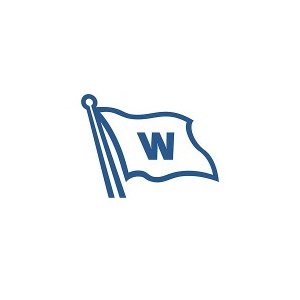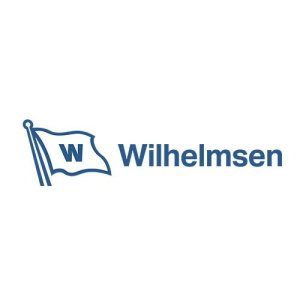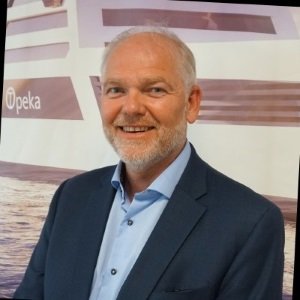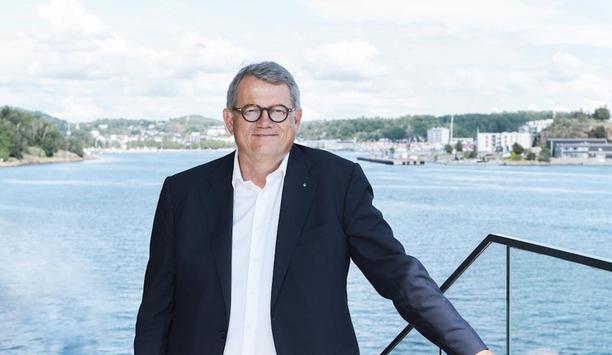Wilhelmsen - Experts & Thought Leaders
Latest Wilhelmsen news & announcements
As a rarity among Norway’s top business pioneers, Morten Fon has spent his entire 36-year career with one company, taking various positions and overseas assignments before being tapped as Jotun’s President and CEO in 2005. Since then, the Norwegian company has experienced almost uninterrupted growth to become one of the fastest growing suppliers in the global paints and coatings industry. “It’s been a remarkable journey,” says Fon. “In addition to a fantastic organisation, Jotun benefits from the continuity of our owners, the Gleditsch family, who have allowed us the freedom to think in years, not quarters,” he says. “This has helped us succeed in the highly cyclical shipping industry.” Deep roots in shipping Fon and the senior management team work hand in hand with Jotun’s Board of Directors Fon and the senior management team work hand in hand with Jotun’s Board of Directors, led by Chairman Odd Gleditsch d.y. He is the grandson of Odd Gleditsch sen., who established the company in 1926. “Today, we sell decorative paints and protective and powder coatings to a broad range of customers, but our roots are in the shipping industry,” says Fon. “In fact, we opened our Group headquarters and R&D centre here in Sandefjord in 2020 on the same piece of land as our first factory, which was built across the fjord from a shipyard. That shipyard closed in 1986, but we are still here.” A global organisation With close to 11,000 employees representing 93 different nationalities active in more than 100 countries worldwide, Jotun is a truly global organisation. Fon credits the company’s historic ties to the Norwegian shipping cluster for the company’s international success. “Shipping is a global industry, so it’s no accident that about half of our global network of 40 factories, many of which have been in operation for decades, were built near ports and shipyards. Today, we supply marine coatings to about a quarter of the world’s merchant fleet and deliver to about 1,400 ports, all over the world.” A history of innovation Jotun’s long-term investments in R&D have also helped the company differentiate itself from the competition Jotun’s long-term investments in R&D have also helped the company differentiate itself from the competition. “Jotun’s focus on innovation is part of our DNA, enabling us to develop several game-changing products over the years,” says Fon. “In addition to a network of regional R&D centres, supported by local laboratories and various test sites, we collaborate with owners, shipyards, and other stakeholders to meet or anticipate the evolving needs of the industry.” ”This process has not only led to innovations that have changed how the industry sees marine coatings, but how we see our offering.” Jotun’s Hull Performance Solutions (HPS) Jotun’s Hull Performance Solutions (HPS) is one such innovation. Launched in 2010, HPS gives owners and operators access to Jotun’s best antifouling technologies, unmatchable technical service, intelligent hull condition management and credible performance guarantees. “I remember thinking at the time that if we succeed with HPS we would change the industry,” says Fon. “It took a lot of work, but today, HPS is recognised as the industry’s most effective antifouling solution, providing owners and ship managers with the ability not only to lower fuel costs and corresponding emissions, but document their results.” From supplier to partner With more than 2000 applications to date, HPS has proven a commercial success With more than 2000 applications to date, HPS has proven a commercial success. But HPS also changed Jotun. “Thanks to HPS, we were able to gather data on hull performance taken from ships in operation, and as more customers signed up to HPS, we were able to collect the industry’s most complete historical dataset on hull efficiency,” Fon says. “This allowed us to develop fouling risk algorithms and performance analytics tools to create a suite of digital services to help customers improve hull performance.” Pressure to improve environmental performance Fon adds that as the industry faces growing pressure from cargo owners and regulators to improve its environmental performance, customers are increasingly recognising the vital role antifoulings play in reducing emissions. “Thanks to HPS, we learned that we have a lot more to offer the shipping industry than steel protection,” he says. “Put another way, they don’t want paint, they want clean hulls.” Hull skating solutions This shift in thinking would produce Jotun’s most daring innovation yet: Hull Skating Solutions This shift in thinking would produce Jotun’s most daring innovation yet: Hull Skating Solutions (HSS.) Developed in a partnership Kongsberg Maritime, Wallenius Wilhelmsen, Semcon, Telenor and DNV, HSS takes hull protection to the next level. HSS consists of five components: A high-performance antifouling coating (SeaQuantum Skate), proactive condition monitoring, high-end technical service and performance guarantees. But what makes HSS unusual is an advanced underwater robotic cleaning unit, the Jotun HullSkater. Industry’s first remotely operated robotic device “Jotun HullSkater is the industry’s first remotely operated robotic device that has been purposely designed for proactive hull cleaning,” he says. “By removing slime and fouling before organisms have time to firmly attach to the hull, the Hull Skater not only helps ship-owners to reduce fuel costs and corresponding emissions, it helps vessels stay in compliance with increasingly strict local and global regulations designed to protect marine ecosystems from invasive aquatic species.” Introducing disruptive technology Jotun’s legacy of innovation has given the organisation the confidence to make bold decisions Fon acknowledges that a remotely controlled robotic hull cleaning unit may seem an unusual investment for a paints and coatings company. But he insists that Jotun’s legacy of innovation has given the organisation the confidence to make bold decisions. “We recognise that the Hull Skater is a disruptive technology. However, if we hadn’t done this, someone else would have,” he says. Early success So far, Jotun’s investment in Hull Skating Solutions is paying off. Now in use on about 30 vessels, the concept has exceeded expectations. “Our customers already understand the benefits of a clean hull, but with growing concerns about ocean pollution and the threat of invasive species, we believe that proactive hull cleaning will allow owners to ‘future proof’ their vessels against pending regulations,” says Fon. “Jotun HullSkater may be the most innovative antifouling system available to the market today, but our focus on supporting our customers hasn’t changed in almost a century. And to me, that is something to celebrate!”
As the supplier of marine coatings, Jotun partners with a broad range of stakeholders working to decarbonise shipping. But is the industry moving fast enough? Jotun’s President and CEO Morten Fon shares his views on how leadership, innovation and collaboration can accelerate the transition to a low carbon future. From his corner office on the seventh floor of Jotun’s Headquarters and R&D Centre, Morten Fon, Jotun’s President and CEO, has stunning views of the marine traffic going in and out of the port of Sandefjord, Norway. While the BREEAM-NOR-certified building is new (completed in 2020) Fon’s view would be familiar to the company’s founder, Odd Gleditsch sen., who established the company on the same piece of land in 1926. Reducing harmful emissions “Jotun’s roots in the maritime industry stretch back almost a century, so we have lived through a great many challenges in this highly cyclical industry,” he says. “But in my view, how the industry manages climate change over the next decade will have an enormous impact on how the industry operates for generations to come.” While Fon acknowledges that the industry still has a long way to go to reach IMO GHG targets (which call for a reduction in carbon intensity by at least 40 per cent by 2030 compared to 2008), he sees some encouraging signs of change. “In addition to embracing new technologies, more stakeholders than ever before are working in partnership on ambitious projects to reduce harmful emissions.” Commercialising alternative fuels Fon supports all these efforts, many of which are focussed on developing and commercialising alternative fuels for ships. But he notes that it will take time before the necessary infrastructure is in place to meet the existing demands of the world fleet. And time is running out. Morten Fon, President and CEO, Jotun said ”As a leader in hull performance, we are focussed on where we can make a difference,” he says. “After all, maintaining a cleaner hull with minimal fouling means a vessel has less resistance when sailing through water, reducing the amount fuel required to achieve the same speed. And less fuel burned results in lower emissions. But we also see we can have a greater impact by working with others.” Propeller performance standard “In fact, Jotun has a long history of collaboration. Many Jotun product innovations involve partnerships with owners and shipyards, while others involve cooperation with technical partners and relevant stakeholders in both the private and public sectors.” “For example, in 2013, Jotun helped form an ISO working group made of 53 experts to develop the industry’s first hull and propeller performance standard (ISO 19030), released in 2016. And last year, Jotun joined the Clean Hull Initiative (CHI), which aims to develop a global standard for proactive hull cleaning in international shipping.Creating standards gives owners the tools to measure performance,” says Fon. “And what can be measured can be managed.” Proactive hull cleaning solution As a pioneer in proactive hull cleaning, Jotun is a key partner in the CHI As a pioneer in proactive hull cleaning, Jotun is a key partner in the CHI. In fact, Jotun launched Hull Skating Solutions (HSS), the world first proactive hull cleaning solution, in 2020. HSS includes a remotely operated underwater hull cleaning unit (the Jotun HullSkater), which uses non-abrasive brushes to remove fouling before it can attach to the hull, without damaging the antifouling coating. To develop this technology, Jotun worked with a team of partners, including Kongsberg Maritime, Wallenius Wilhelmsen, Semcon, Telenor and DNV. “HSS is a good example of how partnerships are key to developing unique solutions to help industry improve environmental performance,” he says. “HSS not only maintains an always clean hull it lowers the risk of spreading invasive species, which can wreak havoc on local marine eco-systems. Protection of biodiversity goes hand in hand with decarbonisation in the shipping industry, and both require a clean hull and attention to biofouling management.” Sharing standardised reports Fon is also encouraged by the industry’s embrace of data-driven services to improve performance. “Increasingly strict regulations, combined with growing pressure from cargo owners to lower emissions, have resulted in more focus on transparency,” he says. “To achieve compliance and become more competitive, owners have to be able to measure, record and share standardised reports on emissions and the condition of their hulls.” The ability to document regulatory compliance extends to protecting sensitive marine eco-systems The ability to document regulatory compliance extends to protecting sensitive marine eco-systems. “Many countries have become more sensitive to invasive species and will deny port access to vessels who cannot document a clean hull,” says Fon. “Good biofouling management policies and the tools to measure and report on performance, will help owners avoid the so called ‘dirty hull syndrome’, a growing issue for owners.” Offering enhanced services Fon says that with the launch of Jotun’s Hull Performance Solutions (HPS) in 2010, the company got an early start on developing its own digital services. “In addition to our premium hull coating SeaQuantum x200 and high-end technical service, HPS includes a performance-based guarantee, calculated using data taken from onboard sensors,” he explains. “Access to this data not only allowed us to verify HPS performance, it gave us some real insight into hull performance over time adding to our understanding and expertise.” With more than 1,400 HPS applications to date, Jotun now has the industry’s most extensive database on hull performance. “Based on data collected over a decade, we have developed advanced algorithms on hull efficiency to offer enhanced services, such as the Business Impact Calculator and Jotun Voyager, a decision support tool helping customers select the right hull coatings for individual trades,“ he says. Optimising hull performance “And last year, we launched HullKeeper, a digital platform to help ship operators optimise hull performance, using remotely operated inspection drones, ROVs and other technologies, regardless of the applied coating.“ When asked if all these investments in hull cleaning robots and digital services means Jotun is changing its business model, Fon laughs. “Never!” he says. “Everything we do supports our core offering: Marine coatings. That’s why we invested in one of the most advanced R&D facilities in Norway,” he adds, gesturing at the gleaming white building visible next door. “We have over 100 chemists working every day to develop next generation products to meet the evolving demands of the industry and remain committed to solving the industry challenges today, and tomorrow.” Improving energy efficiency Fon acknowledges that managing biofouling represents only a small piece of the decarbonisation puzzle Fon acknowledges that managing biofouling represents only a small piece of the decarbonisation puzzle. To achieve meaningful change, Fon believes owners need common global regulations and more support from the public sector to accelerate the green energy shift. In the meantime, owners would be wise to consider an “all of the above” approach to improving energy efficiency. “As we will see at Nor Shipping 2023, there are a lot of solutions out there but in my view, investing in premium hull coatings is ‘low hanging fruit’, especially now that regulations on emissions and biofouling guidelines are tightening and bunkering costs remain high,” he says. “Owners have to paint the hulls of their vessels anyway, so why not choose a hull coating that is not only proven to reduce fuel costs and corresponding emissions, but can help them compete for high value cargoes by keeping their CII ratings high?” Jotun hull performance coatings In fact, Jotun has calculated (based on EU MRV data) that HPS helps lower carbon intensity by an average of about 20 per cent per year, and, depending on the trade, can expect a return on investment in about the same time period. “Even when more expensive alternative fuels become available, clean hulls will help owners maintain operational efficiency and profitability and limit the risk of invasive species,” Fon says. “We calculated that in 2022 alone, ships using Jotun hull performance coatings avoided 7.9 million tonnes of C02 emissions, so the impact is significant.” Expensive alternative fuels Fon is realistic about the challenges that face the industry, but insists that leadership, innovation and collaboration are the way forward. “We see ourselves as part of the solution, but we also know that by working with other industry players, we can maximise our impact,” says Fon. “At Jotun, we are committed to being a part of the solution and Nor-Shipping is a great place to make new friends!”
A new era of offshore operations has begun with the successful delivery of REACH REMOTE 1, a 24-metre unmanned surface vessel (USV) designed by Kongsberg Maritime. This ground-breaking achievement marks a significant milestone through collaboration between Kongsberg Maritime, REACH SUBSEA ASA, Massterly, and Trosvik Maritime. Intensive sea trials Designed to revolutionise offshore operations, the REACH REMOTE 1 is packed with cutting-edge KONGSBERG technology. Its delivery follows a programme of intensive sea trials, overseen by the classification society Det Norske Veritas (DNV) and the Norwegian Maritime Authority. Its initial mission will be to conduct underwater surveys off the coast of Haugesund, Norway, but its potential applications extend far beyond this. The second vessel, REACH REMOTE 2 is now expected to begin sea trials. Responsibility for vessel design Kongsberg Maritime served as the prime contractor for this turnkey project for vessel design Bjørg Mathisen Døving, Vice President (VP) - Reach Remote of REACH SUBSEA, said: “Reach Remote is an extraordinary journey, bringing together the unique expertise of Kongsberg Maritime, Reach Subsea, and Massterly shaping the future of uncrewed offshore operations. We are thrilled to see the Reach Remote 1 set sail and prepared for its first mission.” Kongsberg Maritime served as the prime contractor for this turnkey project, taking responsibility for vessel design, yard delivery, supply chain management, systems integration, and commissioning. The company’s deep expertise in maritime technology was instrumental in bringing this innovative concept to life. Future of offshore activities “What began as a visionary idea has now become a tangible reality,” said Lisa Edvardsen Haugan, President of Kongsberg Maritime. Lisa Edvardsen Haugan adds, “The REACH REMOTE 1USV is a testament to our commitment to pushing the boundaries of maritime technology. We are proud to have partnered with REACH SUBSEA, Massterly and Trosvik Maritime on this pioneering project. As the world transitions towards more sustainable and efficient operations, this pioneering class of vessel is poised to play a vital role in shaping the future of offshore activities.” Key feature of the REACH REMOTE USV design A key feature of the REACH REMOTE USV design is its ability to operate without a crew remotely from the ROC During the sea trials, the USV was monitored and controlled from a temporary, mobile Remote Operations Centre (ROC) located onboard a support vessel Avant, which stayed close by during several days of trials. When the USV starts pilot operations, Massterly, which is a joint venture between Kongsberg Maritime and Wilhelmsen, will control the USV from the land-based ROC in Horten, Norway. A key feature of the REACH REMOTE USV design is its ability to operate without a crew, controlled remotely from the ROC. This approach offers significant advantages in terms of operating costs, safety, and emissions, when compared to carrying out the same duties with a much larger, crewed vessel. Regulatory challenges with uncrewed vessels To ensure the highest levels of safety and reliability, Kongsberg Maritime has incorporated proven technology into the vessel's design. The company worked closely with Det Norske Veritas (DNV) and the Norwegian Maritime Authority to navigate the unique regulatory challenges associated with uncrewed vessels. Increased remote and autonomous functionality will be gradually introduced in a stepwise approach pending technology readiness.
Fleet planning as a strategic asset
Download




























